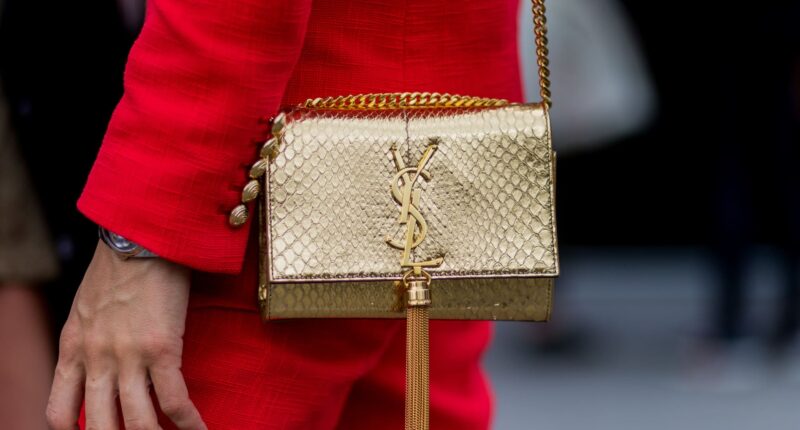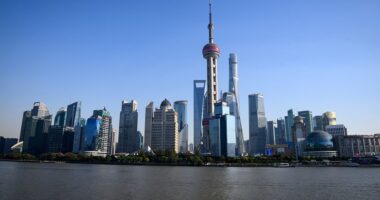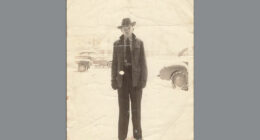Share this @internewscast.com
With the global surge in demand for pre-owned luxury items, the ability to authenticate these products has become a crucial differentiator among platforms vying for credibility.
The market for reselling fashion and luxury goods is experiencing an impressive annual growth rate of 10%, significantly outpacing the 3% growth seen in the market for new items, as detailed in an October 9 report from Boston Consulting Group and luxury resale platform Vestiaire Collective.
This study anticipates the global resale market could swell to as much as $360 billion by 2030, up from its current valuation of approximately $210 billion.
As more consumers turn to pre-owned designer items, establishing trust has become crucial. “With counterfeit production reaching new levels of sophistication, even luxury brands sometimes inadvertently service fake goods, occasionally repairing counterfeits without realizing it,” noted Jaewha Choi, CEO of South Korean online marketplace Bunjang.
Stories of consumers spending thousands on counterfeit Hermès bags or Rolex Oyster Perpetual watches with altered parts are rife on the internet. Some counterfeit items, known as “superfakes,” are crafted with materials sourced from the same suppliers as the authentic brands, making them particularly deceptive.

Buyer beware
Nonetheless, as the resale industry continues to grow, the issue of authentication becomes increasingly critical. Historically, the secondhand market has operated under the principle of “caveat emptor,” or buyer beware.
To counter increasingly realistic “superfakes,” resale platforms are pouring resources into verification. Singapore-based online marketplace Carousell opened its first brick-and-mortar store for luxury items in downtown Singapore this year, allowing sellers to have their items graded by one of the company’s appraisers before listing them for resale.
The verification team inspects not only the material of a bag but also details like stitching and stamping, Tresor Tan, Director of Sales, Marketing and Client Relations at Carousell Luxury, told CNBC.
“At the end of the day, it’s our reputation at stake as well,” Tan said. “And because of that confidence, we also offer our buyers a money-back guarantee on authenticity.”

The company has built a proprietary database covering almost 500 product styles, and higher-valued items go through multiple checks. In cases where the authenticity is in doubt, the items will not be listed, Tan said.
South Korea’s Bunjang has also followed in the same vein, developing its own proprietary authentication system that combines traditional visual inspections with scientific equipment and artificial intelligence “trained on hundreds of thousands of data points,” Choi told CNBC.
Bunjang claims a 99.9% authentication accuracy rate in identifying genuine goods, and its verification system can continuously learn and adapt to counterfeiting methods by leveraging AI.
Trust fuels sales
Both Carousell and Bunjang said verification has boosted business.
Bunjang said luxury goods now make up more than a quarter of its platform’s $1.1 billion in annual gross merchandise value. Transactions and total value for luxury goods rose 30% year on year in the first half of 2025, Choi said.
Carousell’s Tan did not disclose specific figures but said the luxury segment has seen “very strong interest” and has recorded “great growth.”
This growth that began with Carousell’s 2012 launch as an online platform eventually led to the opening of its first physical store.
“When someone is buying and selling a $100,000 watch on the platform, it definitely catches our attention,” she said, saying that users wanted Carousell’s oversight in high-value transactions.
Along with its verification process, the store also offers a money-back guarantee for its products. Tan said that while prices may not always be the lowest in the market, the store aims to offer “fair value.”
“We may be, say, $200 more expensive than what someone else is offering, but [consumers] will still ultimately weigh the different options for $200 savings,” she said. “Am I better off with a bit of assurance?”
Next wave of luxury consumers
Affordability is the top reason for buying secondhand luxury items, cited by 80% of respondents, according to BCG’s report.
But it’s not just about saving money. Shoppers are increasingly drawn to rare or discontinued collections that are no longer available in stores, Samantha Virk, Chief Marketing Officer and U.S. CEO of Vestiaire Collective, told CNBC.
“These motivations are getting stronger across the board as compared to surveys in previous years, showing that secondhand shopping is becoming a deeply ingrained part of how people engage with fashion today,” Virk said.

Younger shoppers, with their limited spending power, prefer to buy, enjoy and quickly resell items, Bunjang’s Choi said.
“This remarkable growth reflects a fundamental shift in how Millennials and Gen Z, the next wave of luxury consumers, perceive and engage with luxury goods.”








